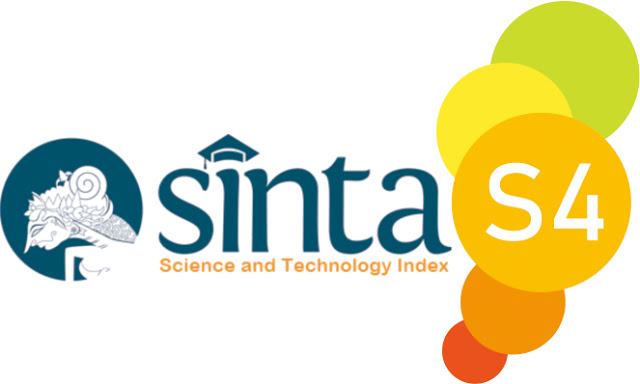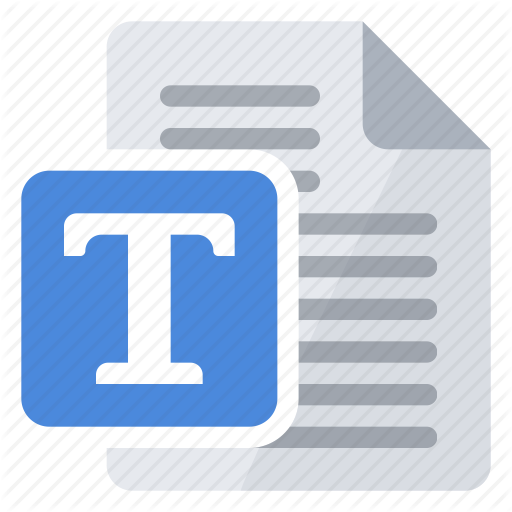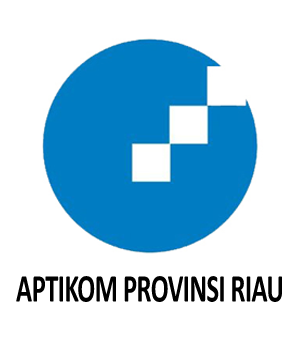Analysis of Factors Influencing the Acceptance of the Indodax Application Using the UTAUT 2 Model
Abstract
This study investigates the key factors influencing user acceptance of the Indodax application, a leading cryptocurrency trading platform in Indonesia, by employing the UTAUT 2 (Unified Theory of Acceptance and Use of Technology 2) framework. The model focuses on four core variables—Performance Expectancy, Effort Expectancy, Social Influence, and Facilitating Conditions—to assess their impact on users’ Behavioral Intention to adopt the platform. Data were collected from 417 respondents using an online questionnaire, and the relationships among variables were analyzed using SmartPLS 4.0 with the bootstrapping technique. The hypothesis testing results confirmed that all proposed hypotheses were supported, indicating that each of the identified factors significantly contributes to users' intentions to use the application. Among the variables, Performance Expectancy and Facilitating Conditions were found to have the strongest impact on users' Behavioral Intention. Nevertheless, Effort Expectancy and Social Influence also demonstrated significant positive effects. These outcomes emphasize the importance of improving user experience by enhancing system usability, leveraging social influence, and strengthening supporting infrastructure. Overall, the study offers valuable insights for developers, platform providers, and policymakers in developing strategies to encourage broader adoption of cryptocurrency platforms like Indodax and to support the growth of the digital asset ecosystem in Indonesia.
Downloads
References
I. D. Astuti, S. Rajab, and D. Setiyouji, “Cryptocurrency Blockchain Technology in the Digital Revolution Era,” Aptisi Trans. Technopreneurship ATT, vol. 4, no. 1, pp. 9–16, Jan. 2022, doi: 10.34306/att.v4i1.216.
E. Kostika and N. T. Laopodis, “Dynamic linkages among cryptocurrencies, exchange rates and global equity markets,” Stud. Econ. Finance, vol. 37, no. 2, pp. 243–265, Jan. 2020, doi: 10.1108/SEF-01-2019-0032.
M. Umar, C.-W. Su, S. K. A. Rizvi, and X.-F. Shao, “Bitcoin: A safe haven asset and a winner amid political and economic uncertainties in the US?,” Technol. Forecast. Soc. Change, vol. 167, p. 120680, Jun. 2021, doi: 10.1016/j.techfore.2021.120680.
E. Saiedi, A. Broström, and F. Ruiz, “Global drivers of cryptocurrency infrastructure adoption,” Small Bus. Econ., vol. 57, no. 1, pp. 353–406, Jun. 2021, doi: 10.1007/s11187-019-00309-8.
S. R. D. Setiawan, “Bappebti: Jumlah Pelanggan Aset Kripto di Indonesia Tembus 21,27 Juta - Kementerian Perdagangan Republik Indonesia.” Accessed: Dec. 12, 2024. [Online]. Available: https://www.kemendag.go.id/berita/pojok-media/bappebti-jumlah-pelanggan-aset-kripto-di-indonesia-tembus-2127-juta
[V. Venkatesh and F. D. Davis, “A Theoretical Extension of the Technology Acceptance Model: Four Longitudinal Field Studies,” Manag. Sci., vol. 46, no. 2, pp. 186–204, Feb. 2000, doi: 10.1287/mnsc.46.2.186.11926.
T. Escobar-Rodríguez and E. Carvajal-Trujillo, “Online purchasing tickets for low cost carriers: An application of the unified theory of acceptance and use of technology (UTAUT) model,” Tour. Manag., vol. 43, pp. 70–88, Aug. 2014, doi: 10.1016/j.tourman.2014.01.017.
G. A. Abbasi, L. Y. Tiew, J. Tang, Y.-N. Goh, and R. Thurasamy, “The adoption of cryptocurrency as a disruptive force: Deep learning-based dual stage structural equation modelling and artificial neural network analysis,” PLOS ONE, vol. 16, no. 3, p. e0247582, Mar. 2021, doi: 10.1371/journal.pone.0247582.
M. H. Bakri, N. A. A. Aziz, M. I. M. Razak, M. H. A. Hamid, M. Z. M. Nor, and A. A. I. Mirza, “Acceptance Of Ddkoin Blockchain Using Utaut Model: A Customer Perspective Approach,” Qual. - Access Success, vol. 24, no. 192, Jan. 2023, doi: 10.47750/QAS/24.192.13.
W. H. Bommer, E. Milevoj, and S. Rana, “The intention to use cryptocurrency: A meta-analysis of what we know,” Emerg. Mark. Rev., vol. 55, p. 100962, Jun. 2023, doi: 10.1016/j.ememar.2022.100962.
I. Indrawati and N. W. Firdaus, “BLOCKCHAIN ACCEPTANCE ANALYSIS USING THE UTAUT2 MODEL,” TRIKONOMIKA, vol. 21, no. 2, pp. 77–83, Dec. 2022, doi: 10.23969/trikonomika.v21i2.5031.
V. Kumari, P. K. Bala, and S. Chakraborty, “An Empirical Study of User Adoption of Cryptocurrency Using Blockchain Technology: Analysing Role of Success Factors like Technology Awareness and Financial Literacy,” J. Theor. Appl. Electron. Commer. Res., vol. 18, no. 3, pp. 1580–1600, Sep. 2023, doi: 10.3390/jtaer18030080.
M. Arias-Oliva, J. De Andrés-Sánchez, and J. Pelegrín-Borondo, “Fuzzy Set Qualitative Comparative Analysis of Factors Influencing the Use of Cryptocurrencies in Spanish Households,” Mathematics, vol. 9, no. 4, p. 324, Feb. 2021, doi: 10.3390/math9040324.
F. W. Citra and A. Maulana, “Analisis Penerimaan Cryptocurrency dan Instrumen dengan Menggunakan Unified Theory of Acceptance dan Use of Technology (UTAUT),” SATESI J. Sains Teknol. Dan Sist. Inf., vol. 3, no. 2, Oct. 2023, doi: 10.54259/satesi.v3i2.2263.
S. Taufan and D. Wardani, “Analisis penerimaan bank digital dengan UTAUT 2 pasca pandemi,” J. Manaj. Strategi Dan Apl. Bisnis, vol. 6, no. 2, pp. 265–284, Sep. 2023, doi: 10.36407/jmsab.v6i2.785.
A. F. Alkhwaldi, I. Abu-Alsondos, A. Abdulmuhsin, M. Shehadeh, and F. M. Aldhmour, “Toward an Understanding of Cutting Edge Technologies in Financial Industry: Cryptocurrency Adoption,” in Cutting-Edge Business Technologies in the Big Data Era, S. G. Yaseen, Ed., Cham: Springer Nature Switzerland, 2023, pp. 64–82.
D. A. Almajali, R. Masa’Deh, and Z. M. d. Dahalin, “Factors influencing the adoption of Cryptocurrency in Jordan: An application of the extended TRA model,” Cogent Soc. Sci., vol. 8, no. 1, p. 2103901, Dec. 2022, doi: 10.1080/23311886.2022.2103901..
S. Alzyoud, H. Alshurafat, and I. N. Khatatbeh, “Understanding cryptocurrency investment behaviour in Jordan: an examination of motivational drivers through the lens of the UTAUT2 model,” Stud. Econ. Finance, vol. ahead-of-print, no. ahead-of-print, Jan. 2024, doi: 10.1108/SEF-02-2024-0088.
S. Lemeshow, “Adequacy of sample size in health studies,” No Title, 1990.
W. W. Chin, “The partial least squares approach to structural equation modeling,” Mod. Methods Bus. Res., vol. 295, no. 2, pp. 295–336, 1998.
D. Y. Prasetyo, "PENERAPAN METODE UTAUT (UNIFIED THEORY OF ACCEPTANCE AND USE OF TECHNOLOGY) DALAM MEMAHAMI PENERIMAAN DAN PENGGUNAAN WEBSITE KKN LPPM UNISI," vol. 6, 2017.
M. Indah and H. Agustin, "Penerapan Model Utaut (Unified Theory Of Acceptance And Use Of Technology) Untuk Memahami Niat Dan Perilaku Aktual Pengguna Go-Pay Di Kota Padang," J.M. Indah and H. Agustin, "Penerapan Model Utaut (Unified Theory Of Acceptance And Use Of Technology) Untuk Memahami Niat Dan Perilaku Aktual Pengguna Go-Pay Di Kota Padang," J.
J. F. Hair, W. C. Black, B. J. Babin, and R. E. Anderson, Multivariate data analysis, Seventh edition. Pearson new international edition., 1 online resource (ii, 734 pages) : illustrations (black and white) vols. in Always learning. Harlow, Essex: Pearson Education Limited, 2014. [Online]. Available: http://www.dawsonera.com/depp/reader/protected/external/AbstractView/S9781292035116
J. Hair, C. Ringle, and M. Sarstedt, “PLS-SEM: Indeed a silver bullet,” J. Mark. Theory Pract., vol. 19, pp. 139–151, Mar. 2011, doi: 10.2753/MTP1069-6679190202.
D. Blumenthal, “Information Technology Comes to Medicine,” N. Engl. J. Med., 2007.
Copyright (c) 2025 Raffi Abdillah Putra Alisia, Anita Wulansari, Rafika Rahmawati

This work is licensed under a Creative Commons Attribution-ShareAlike 4.0 International License.
This is an open-access article distributed under the terms of the Creative Commons Attribution-ShareAlike 4.0 International License which permits unrestricted use, distribution, and reproduction in any medium. Users are allowed to read, download, copy, distribute, search, or link to full-text articles in this journal without asking by giving appropriate credit, provide a link to the license, and indicate if changes were made. All of the remix, transform, or build upon the material must distribute the contributions under the same license as the original.















